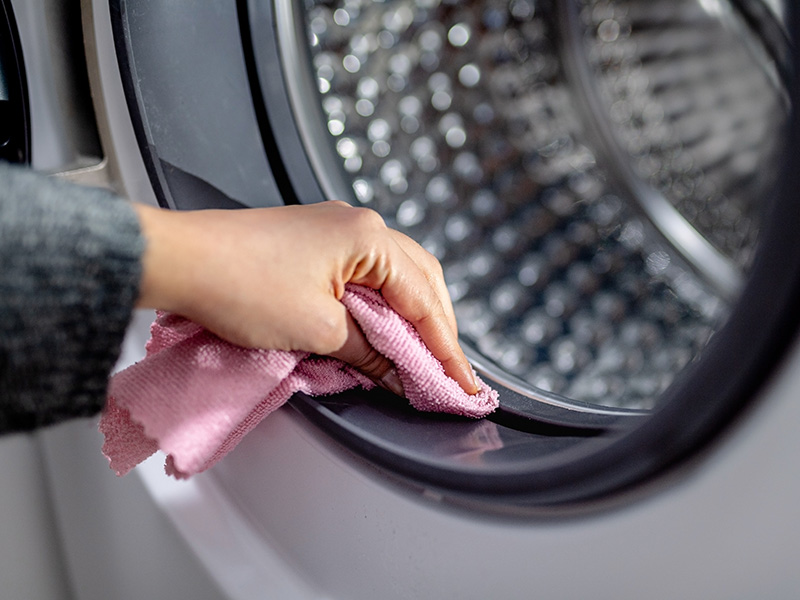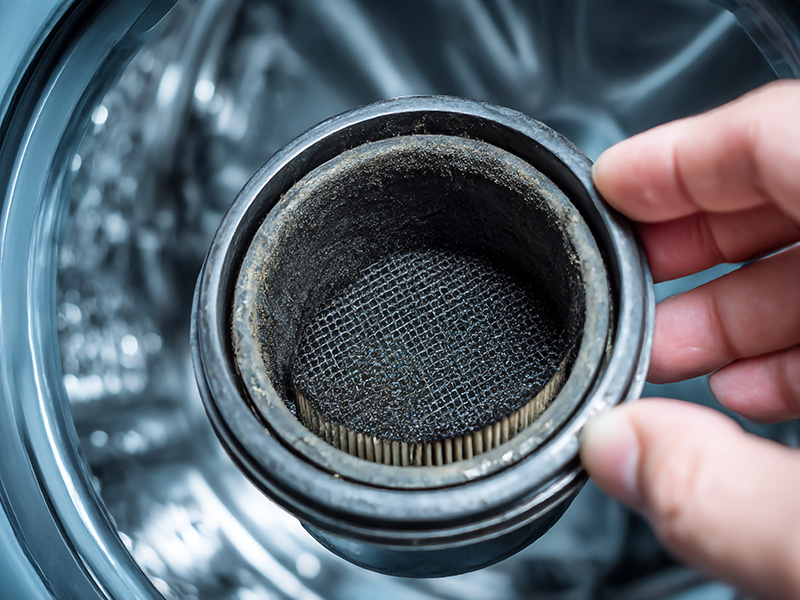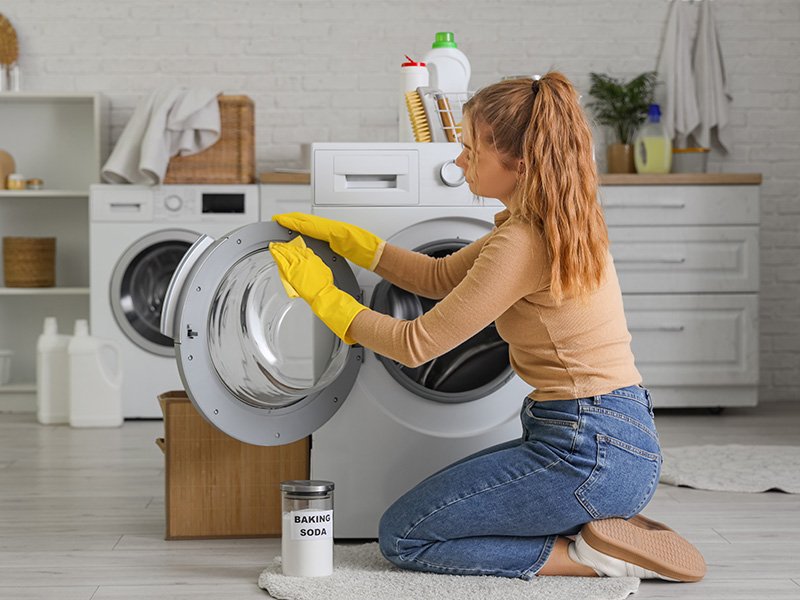How To Clean a Washing Machine?

Your washing machine works hard to keep your clothes fresh and clean, but when was the last time you cleaned it? Over time, detergent build-up, limescale, and bacteria can make your machine less efficient and even leave your laundry smelling less than fresh. Regular maintenance is the smart way to extend the life of your appliance, save money on repairs, and keep your clothes looking their best.
In this guide, we’ll walk you through simple, effective ways to clean your washing machine—whether you have a front-loader or top-loader.
Why Cleaning Your Washing Machine Matters

A clean washing machine does more than just smell fresh. When the drum and filter are free from residue, your washer performs at its best, keeping cycles efficient and reliable. Regular cleaning also prevents musty odors from clinging to your clothes, so laundry comes out smelling fresh every time. On top of that, a well-maintained appliance uses less water and energy, saving you money, and is far less likely to break down—helping extend its lifespan for years to come.
Before You Begin
Before giving your washing machine a deep clean, take a moment to check the user manual. This is important because:
- Some models come with a built-in drum cleaning program.
- Manufacturers may suggest a particular cycle for keeping the machine clean.
- Certain brands advise against using descalers or cleaning products, so it’s always best to confirm first.
What You’ll Need

What You’ll Need
You don’t need anything fancy to give your washing machine a deep clean. White vinegar and baking soda are the go-to natural options, while a microfibre cloth, an old toothbrush, and a small towel will help you reach the tricky spots. If you prefer, you can also use a manufacturer-approved cleaning solution instead of vinegar.
Step-by-Step Guide to Cleaning Your Washing Machine
1. Clean the Detergent Drawer
Remove the detergent drawer and soak it in warm, soapy water. Scrub away any build-up with an old toothbrush, then rinse and dry it thoroughly before sliding it back into place.
2. Run a Hot Vinegar Wash
Pour two cups of white vinegar into the detergent drawer and run the hottest cycle your machine allows. This helps disinfect the drum, dissolve limescale, and clear away lingering odors.
3. Add a Baking Soda Boost
For extra freshness, sprinkle half a cup of baking soda directly into the drum and run a short hot cycle. This will neutralize stubborn smells and tackle any residue the vinegar left behind.
4. Clean the Rubber Seal (Front-Loaders)
If you have a front-loader, gently pull back the rubber seal around the door. Wipe away grime, lint, and trapped debris using vinegar and a cloth, then dry the area completely to prevent mold growth.
5. Empty and Clean the Filter
Most washing machines have a filter located at the bottom front. Place a towel underneath, carefully open it to release any trapped water, and rinse the filter under warm water before replacing it.
6. Wipe the Exterior
Finally, give the outside of the machine a quick clean with a damp cloth. Wipe down the buttons, knobs, and door for a fresh finish.
How Often Should You Clean It?
A little regular care goes a long way. A monthly deep clean with vinegar and baking soda will keep your washer running efficiently. Between washes, try to leave the door open to let the drum dry out, and give the rubber seal a quick wipe. Once a year, check the hoses for wear and consider replacing them every few years to avoid leaks.
Smart Living Tips for Maintenance
Good habits can make cleaning less of a chore. Use the right amount of detergent—too much can cause build-up. If you mostly wash on cold cycles, run a hot empty wash every now and then to keep the drum fresh. And don’t forget the filter: clearing it regularly prevents blockages and helps the machine drain properly.
Final Thoughts
A clean washing machine is the secret to fresher laundry and a longer-lasting appliance. With just a little monthly care, you can save money, reduce energy use, and keep your clothes looking their best. The process doesn’t take long, but it makes a big difference to both your clothes and your home.
Think of it as part of your overall home routine—like wiping down the kitchen counters or vacuuming the floors. By building it into your schedule, you’ll avoid musty odors, prevent costly repairs, and enjoy the peace of mind that your appliance is working at its best. Plus, maintaining your washing machine means you’re using less water and electricity, which is kinder to both your wallet and the environment.
So, the next time you throw in a load of laundry, remember that your washer needs care too. A few simple steps will keep it running smoothly for years to come—and that’s smart living at its finest.
Want to Get the Most from Your Washing Machine?
For more tips on keeping your appliances running smoothly, check out our
Buying a washing machine .
You’ll find expert advice on choosing the right model, improving efficiency, and extending your machine’s lifespan.
FAQs
Ideally once a month. Regular cleaning prevents odours, mould, and detergent build-up.
- Run an empty hot wash with washing machine cleaner, white vinegar, or bicarbonate of soda.
- Wipe down the drum, door seal, and detergent drawer afterwards.
- Wipe with a cloth dipped in warm soapy water or vinegar.
- Make sure to reach into the folds where mould and detergent residue often collect.
Yes, leaving the door slightly open after washes allows air to circulate and helps prevent mould.
Remove it (most slide out easily), soak in warm soapy water, and scrub away any residue.




